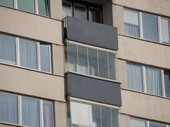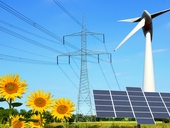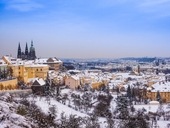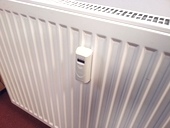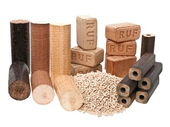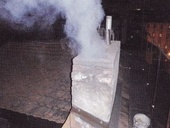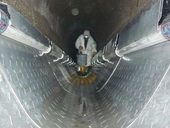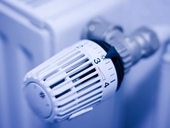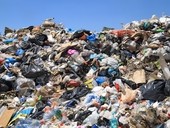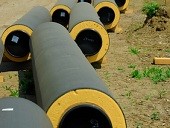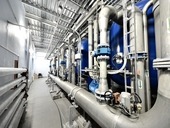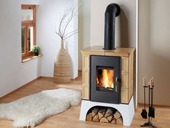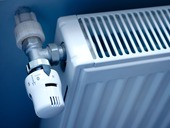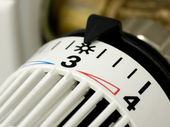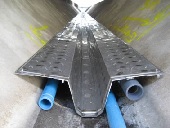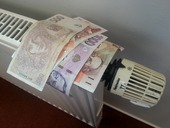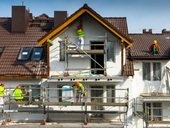Currently there are changes in our legislation in order to increase the energy efficiency of heating. Opinions differ on the effect of accepted changes. While some expect significant savings on heat, others, and I am one of them, draw attention to the absurdity of the whole project.
Archiv článků od 25.8.2014 do 8.12.2014
Concept Data Support Department of the Ministry of Industry and Trade has prepared this statistical report as a comprehensive national statistics on renewable energy sources. The report focuses on the share of RES in the energy balance of the Czech Republic and describes in detail the development of the each RES categories, which are: biomass, biogas, liquid biofuels, solar, wind and water energy, heat pumps and renewable part of industrial and municipal waste. There is a description of methodology regarding data collection and consequent analysis at the beginning of each section (chapter) of the report. Data included in the report are fully comparable (compatible) with data which are reported on regular basis to International Energy Agency and Eurostat.
The heating period 2013/2014 in Prague based on the observation of Prague-Karlov station was 230 days, a little longer, and with an average temperature of 6.8 °C, significantly warmer than the long-term average. The basic characteristic of heat demand for heating is 2 814 D° (19) degree days, hence, the heat demand is significantly lower than the long-term average of 3 227 D° (19). Since 2000, it's the second lowest number of degree days in the heating period.
Technical tools for splitting the heating costs measure only some of the factors characterizing the mode of heating and heat consumption. Many important factors are not measured or are immeasurable. A correct allocation must take into account not only the measured values, but also the effect of the unmeasured factors.
Paper deals with on the one hand products of smoke-burning and with their influence on human organism, on the other hand with possibility of soot- ignition at appliance on solid fuel. As a result is the crack of plastering in chimney possibly even their destruction. Claying of holes by special mixture containing glass fibres is renovation system for classic masonry chimneys. This mixture after mixing with water with application special mechanization pours into chimney hole. In conclusion the cases are specified when checks of chimney is carry out.
Waste water that ends up in the sewer network contains a large amount of energy. Utilization of this energy, which is also available throughout whole year, is not yet part of the standard engineering practice in the Czech Republic. This article brings an inspiration in the form of experience from Austrian city of Amstetten, where was implemented a project, which is using combination of a sewage heat exchanger and a heat pump. State of the art as the same as the factors affecting the utilization of waste heat are also included.
The heating is different from the circulating water supply by solving the transmission capability (thermals) and power control (thermals + hydraulics). Basic control condition (default) ensures adjustment of elements on the required thermal and hydraulic parameters. Regulating processes are derived from this status, as well as the heat savings in heating. The savings can be solved only through a project and nothing else.
The issue of energy utilization of waste and the connected construction of new facilities is a very actual phenomena. The article addresses primary the trends of waste treatment and contemplates the option of energy utilization of waste from different perspectives. In a not insignificant part of the article is described the waste as a fuel, which means its composition and properties. This article is first from a prepared miniseries about waste.
The article, with its theme of gear just beginning to cell cycle at a relatively broad topic of “thermodynamic phenomena in the pipeline and its surroundings”, describes the current situation in the field of pipeline networks and in the field of energy related equipment, determining the operating condition of the whole heating systems. This is essentially a search condition and trends of modern heating, working as using conventional manufacturing processes, as well as the application of engineering principles and methods in the field of far less obvious. This two-part article, articles and downstream, is also setting research targets thermodynamic and hydraulic phenomena in pipes and in its vicinity, which gradually obtaining knowledge useful in practice, will be precisely processed using mathematical, mostly numerical, models.
The article, with its theme of gear just beginning to cell cycle at a relatively broad topic of “thermodynamic phenomena in the pipeline and its surroundings”, describes the current situation in the field of pipeline networks and in the field of energy related equipment, determining the operating condition of the whole heating systems. This is essentially a search condition and trends of modern heating, working as using conventional manufacturing processes, as well as the application of engineering principles and methods in the field of far less obvious. This two-part article, articles and downstream, is also setting research targets thermodynamic and hydraulic phenomena in pipes and in its vicinity, which gradually obtaining knowledge useful in practice, will be precisely processed using mathematical, mostly numerical, models.
District Heating Association of the Czech Republic in late July issued a press release in which reacts to the latest proposal by the European Commission. According to the Commissioner for Energy Günther Oettinger, EC is going to order that EU Member States ensure without obligation energy savings equal to 30 % by 2030.
Having your own home fireplace or stove wants more and more users. Indoor heaters are a hit in recent years. In 2013, the Czech Republic has sold more than 22,000 different interior furnaces primarily on wood. About a quarter of the new owners then voted fireplace or stove with heat exchanger, thus such a source that can heat the whole flat or low-energy house. Some have even reached for the most comfortable way of using wood in the interior - automatic wood pellet stoves.
The owners of houses in the Czech Republic, in which many flats share common central heating system, must fulfill new legal liability: “to equip the heating system in the building with the devices that regulate and register the delivery of heat to the end users, in the extent defined in an implementary regulation”. According to the law, they have to do so by end of year 2014. The problems are that neither the devices are further specified in the law, nor the implementary regulation exists. The most frequent hypothesis about this duty is that one should install the so-called indicators of heating expenses. It might be valid, but it goes far beyond the legal requirements: As a side effect, it introduces certain method of the expenses accounting. This article presents and justifies an alternative: The liability can be fulfilled by installation of thermostatic valves on the heating bodies.
The article describes important new information about resolving the central heating. Heating is different from circulating water supply by solving transmission capability of pipe networks and by solving the power control. The article deals with the first of real heating characteristics – transmission capability of isolated and non-isolated pipe networks.
Which buildings can receive grants from the Green Savings Programme, amount of the grants and what technical details cover the energy audit? Part A in this article covers the specific questions (building’s envelope rennovation). A sample of 16 family houses that comply with all the required conditions of the New Green Saving Programme from 2013 is further described in this article.
zpět na aktuální články
